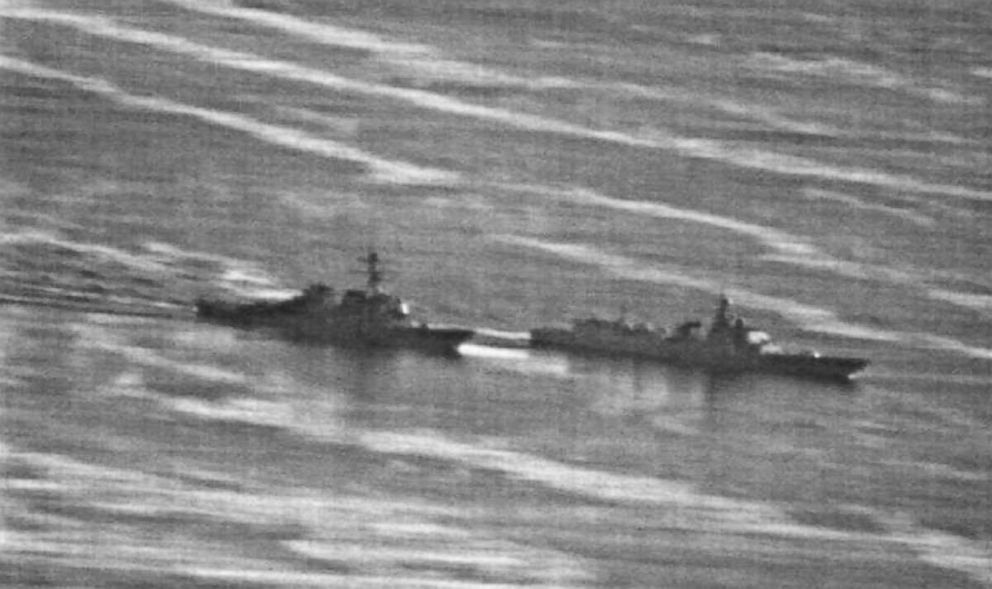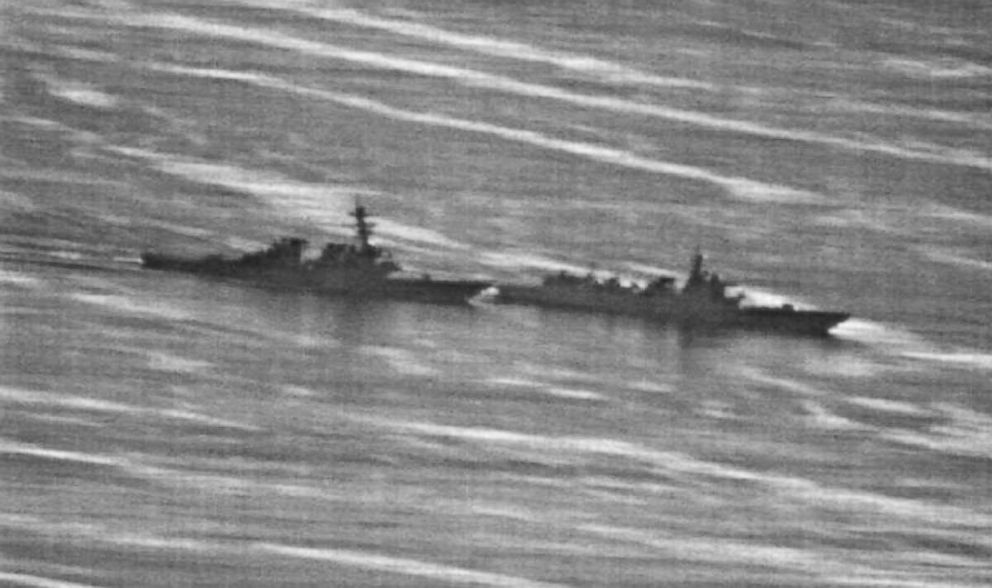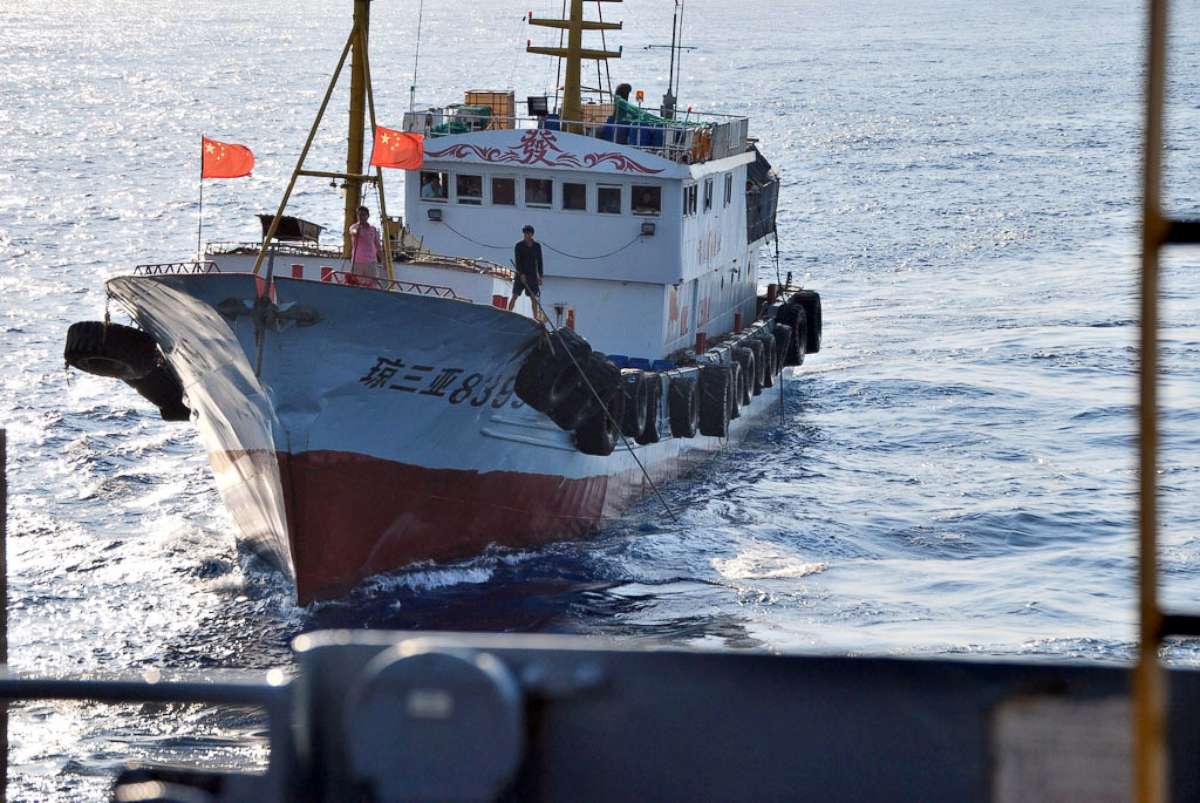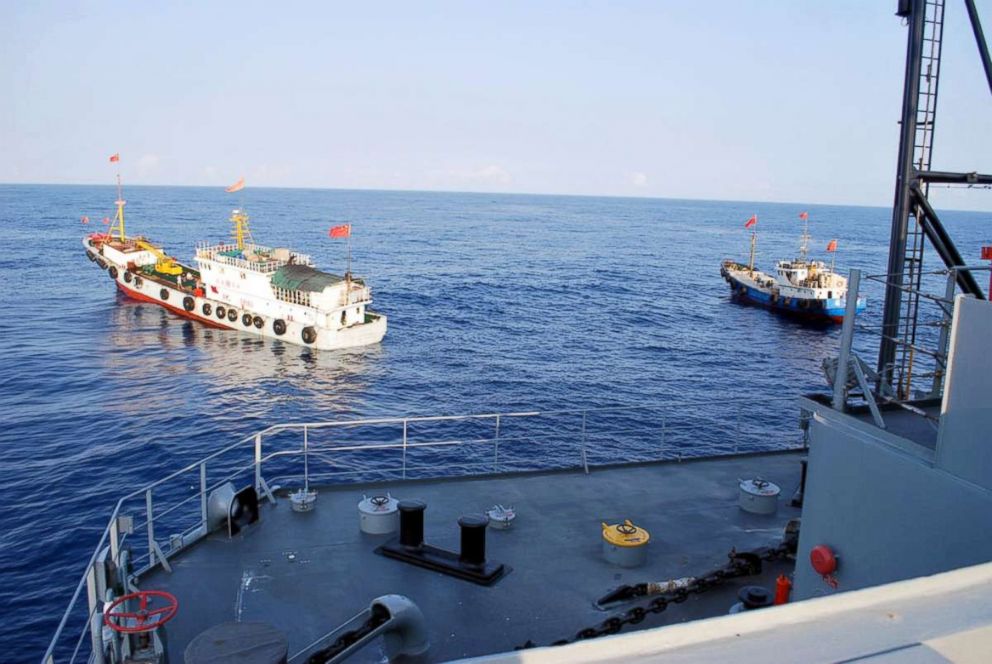A look at the US military's close calls with China, Russia in the air and at sea
U.S. officials say both countries are getting more aggressive.
When a Chinese warship sailed 135 feet from the bow of the U.S. Navy destroyer USS Decatur on Sunday -- a distance so close the American ship's commander had to make last-second maneuvers to avoid a collision -- it was just the latest in a series of close calls between the U.S. military and its adversaries.
During Sunday's close encounter a Chinese warship initially shadowed the USS Decatur as it made its way through international waters in the Spratly Islands.

Initially trailing alongside the American destroyer at a distance of 500 yards the Chinese destroyer quickly moved into position ahead of the USS Decatur's bow.

Unreleased U.S. Navy aerial photos obtained by the website gcaptain.com show just how close the two ships were in position with each other, possibly even closer than the 135 feet (45 yards) distance released by the U.S. Navy. A U.S. official confirmed to ABC News that the photos posted on the website were U.S. Navy photos of the incident.
The U.S. Navy characterized the Chinese ship's actions in the South China Sea as "unsafe and unprofessional" -- the term typically used by the U.S. military to describe risky close calls experienced by its ships and aircraft in international waters and airspace.
With American military ships and planes conducting regular operations worldwide, there is always a chance for close encounters with military ships particularly from China and Russia.
How often do those types of unsafe interactions occur? Not often, but when they do they are attention-getters. If the incidents are deemed dangerous enough, the U.S. will file a formal complaint with China or Russia, but in the end, all that usually happens is that the U.S. military issues statements reaffirming its right to sail or fly through international waters and airspace.
The encounters with Russia and China have been occurring with greater frequency in recent years, but for different reasons.
U.S. officials believe Russia's close encounters with the U.S. military are prompted by Russia's effort to reassert itself militarily around its borders.
The encounters with China are a reflection of that nation's use of its military to back up its aggressive territorial claims in the South China Sea.
In recent years, the closest encounters have been in the Baltic Sea and the Black Sea involving Russian military aircraft buzzing American ships and flying too close to American planes.
On January 29, the U.S. says a Russian SU-27 fighter jet came within five feet of a Navy EP-3 Aries surveillance plane flying in international airspace above the Black Sea.
That distance might seem super close, but the Navy labeled the encounter "unsafe" because unprovoked, the Russian fighter crossed directly through the EP-3’s flight path, causing the surveillance aircraft to fly through the Russian plane's jet wash.
The Russian Defense Ministry denied that the Russian fighter had maintained a safe distance to identify the American plane that it said was approaching Russian airspace.
The encounter was similar to a Russian intercept over the Black Sea in late November when a Russian SU-30 fighter jet used its afterburners to fly in front of a Navy P-8 Poseidon surveillance plane, causing the American aircraft to roll severely through the turbulence.
But perhaps the riskiest flight encounters with Russian aircraft occurred in April 2016 in the Baltic Sea both in the air and water.
On April 11 and 12, the destroyer USS Donald Cook was buzzed more than 30 times by a pair of Su-27 fighters that on one occasion flew as close as 30 feet from the ship. The Pentagon later released video and still images to demonstrate how risky the Russian aircraft maneuvers had been.
Later that month on two separate occasions, Russian SU-27 fighter pilots carried out barrel rolls over U.S. Air Force RC-135 reconnaissance planes, one of them coming within 25 feet of the American plane.
Meanwhile, the majority of the unsafe interactions with China typically occur in the South China Sea where it has made territorial claims in several island chains.
Typically, the U.S. Navy carries out freedom of navigation operation (FONOP) transits through international waters surrounding the islands claimed by China in the Spratly Islands and Paracel Islands.
As occurred with the USS Decatur this weekend, oftentimes those transits are shadowed by Chinese warships.
Typically, the Chinese warship will make constant bridge-to-bridge radio communications with the American vessel demanding that it exit what they label Chinese territorial waters.
Meanwhile, the commanders of the American ship will respond that they are legally transiting through international waters.
While the ships will often maintain a safe distance there have been two previous encounters where the Chinese Navy ships almost caused a collision.
In December 2013 the U.S. Navy cruiser USS Cowpens narrowly avoided a collision with a Chinese PLA Navy warship that the U.S. said had been harassing it.

The same occurred in March 2009 when five Chinese vessels harassed the USNS Impeccable as it sailed in the South China Sea, one of the Chinese ships came as close as 25 feet forcing the American crew to use fire hoses to prevent the ships from getting any closer.

In the end, the American ship came to a full stop to avoid colliding into two Chinese vessels that had placed themselves in its path.
Chinese harassment is not limited to warships, as American planes flying in international airspace through the South China Sea also face constant Chinese radio messages demanding that they leave what they say is Chinese airspace.
And there are barrel roll flights, too.
In May 2017 a Chinese SU-30 fighter aircraft executed a barrel roll above a U.S. Air Force C-135 reconnaissance plane.




